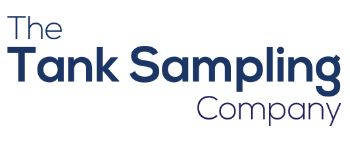The Sampling and Testing Process – What we do
Prior to visiting site, normally we will have completed the following:
- View a copy of the site drainage drawing
- Review the consent document supplied to us by our client
- Discuss the requirements in detail such as any areas of concern, responsibilities, Health & Safety
- Agree the frequency of sampling for ongoing monitoring
From the drainage layout and the consent, we will identify the sampling point for each drainage asset to be sampled. The consent normally specifies the sampling point on a plan from within the document.
Not all sites have the information available, especially if the site has changed hands over the years. It is, however, best practice for this information to be available to the local authority or emergency services.
If we have not seen these details prior to arriving on site, we will investigate the layout and determine the point where the best representative sample of the final effluent is to be taken.
We use, wherever possible, UKAS accredited laboratories to analyse the samples. Depending upon the suite of analysis determined by the discharge consent, several containers of varying sizes and materials will be filled, e.g. 250ml Glass for Oil and Grease, 1L PET for Suspended Solids, BOD, COD.
Stability periods for each analysis are different, so we will deliver samples to the laboratory in the timeframe based on the shortest stability period – normally same day or within 24 hours.
The lab conducts the testing of the samples and return the results to TSC. This generally takes 7-10 working days.
On receiving the test report from the laboratory, we forward the results of the testing to the customer, along with any observations regarding the site conditions and the state of repair of the drainage/tanks. Over multiple sampling visits, we chart the history of the results. This helps to highlights trends in the results, for instance seasonal variations.


Standard Tests for a Sewage Treatment Plant
Biochemical oxygen demand (BOD, also called biological oxygen demand) is the amount of dissolved oxygen needed (i.e. demanded) by aerobic biological organisms to break down organic material present in a given water sample at certain temperature over a specific time period. The BOD value is most commonly expressed in milligrams of oxygen consumed per litre of sample during 5 days of incubation at 20 °C. It is often used to evaluate the degree of organic pollution in water
TSS of a water or wastewater sample is determined by pouring a carefully measured volume of water (typically one litre) through a pre-weighed filter of a specified pore size. The filter is weighed again after the drying process that removes all water on the filter. The gain in weight measures the particulates present in the water. This is typically expressed in units calculated from the volume of water filtered (milligrams per litre or mg/L).
Ammoniacal nitrogen (NH3-N), is a measure for the amount of ammonia, a toxic pollutant often found in landfill leachate and in waste products, such as sewage, liquid manure and other liquid organic waste products. It can also be used as a measure of the health of water in natural bodies such as rivers or lakes, or in man made water reservoirs.
The hydrogen ion concentration expressed as pH. This is a valuable parameter in the operation of biological treatment units. The pH of the fresh sewage is slightly more than the water supplied to the community. Generally the pH of raw sewage is in the range 5.5 to 8.0.
Typical Testing for an Oil/Water Separator
Chemical Oxygen Demand (COD) is an indicative measure of the amount of oxygen that can be consumed by reactions in a measured solution. It is commonly expressed as mass of oxygen consumed in a volume of solution, normally milligrams per litre (mg/L). The most common application of COD is in quantifying the amount of oxidizable pollutants found in surface water or wastewater.
The level of hydrocarbons in the final effluent from an interceptor indicates the effectiveness of the treatment of the effluent occurring in the interceptor. High levels of hydrocarbons (Oil and Grease), may determine the requirement for cleaning, or indicate that an issue in the treatment process is present. The hydrocarbon content is normally expressed in mg/L.
The settleable solids test is a useful method for determining the amount of solids entering a wastewater treatment plant, as well as for estimating the amount of sludge to be expected during the treatment process. Settleable solids from interceptors will normally have a limit set in the consent expressed as mg/L – Settleable Solids (1 hr) and Rapidly Settleable Solids (5 min) determines volumes of different particle sizes
pH – The measure of alkalinity or acidity is controlled to ensure downline treatment facilities are not damaged. Trade Consents (depending upon the water authority) normally require pH to be within the range to 6 to 10

